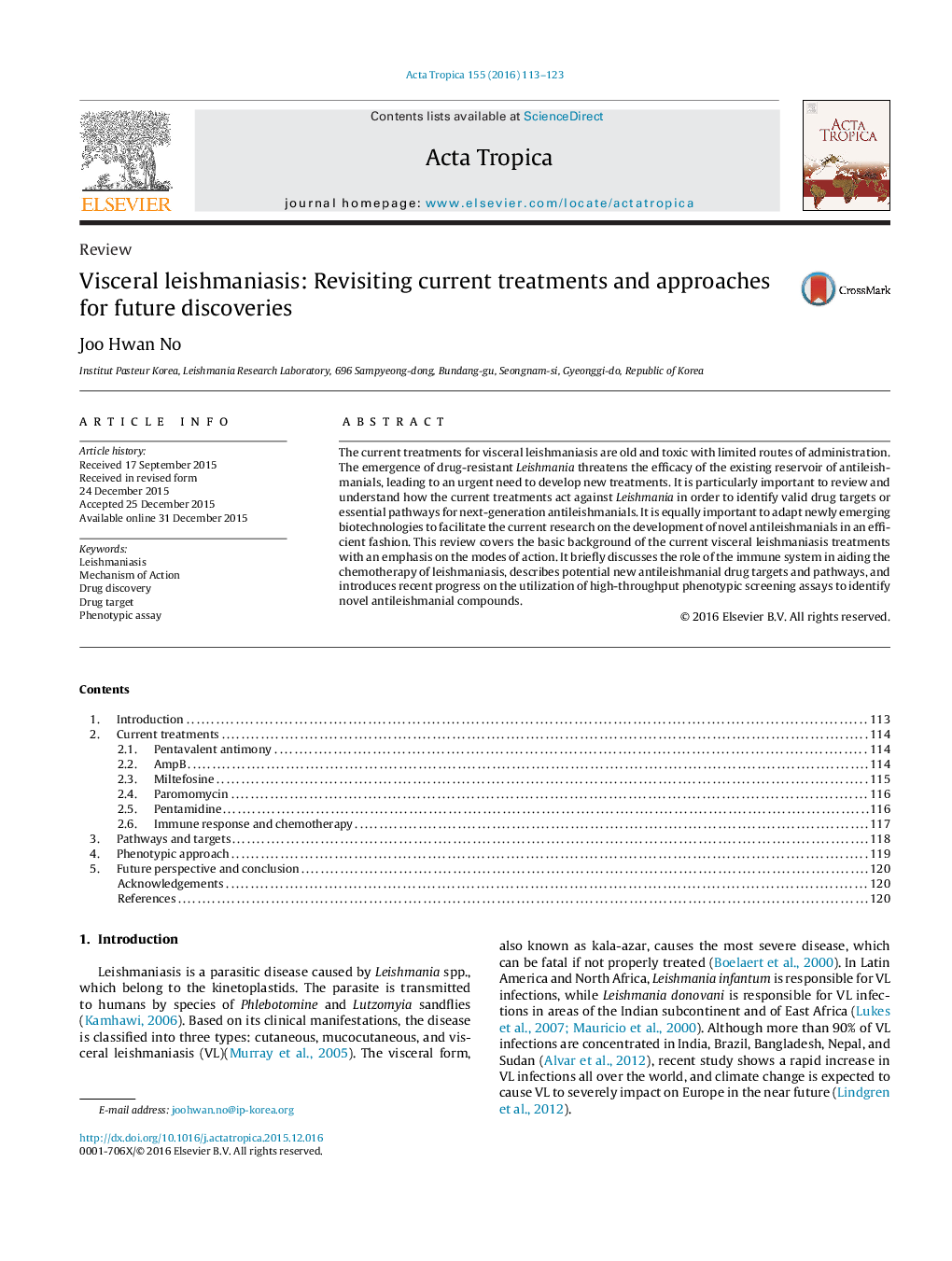| Article ID | Journal | Published Year | Pages | File Type |
|---|---|---|---|---|
| 3393762 | Acta Tropica | 2016 | 11 Pages |
•The general background and mode of action on current antileishmanial drugs are introduced.•Molecular targets or pathways for antileishmanial developments are covered.•The role of immune system in aiding the chemotherapy is discussed.•The current progress on cell-based (phenotypic) Leishmania assay is described together with recent screening programs.
The current treatments for visceral leishmaniasis are old and toxic with limited routes of administration. The emergence of drug-resistant Leishmania threatens the efficacy of the existing reservoir of antileishmanials, leading to an urgent need to develop new treatments. It is particularly important to review and understand how the current treatments act against Leishmania in order to identify valid drug targets or essential pathways for next-generation antileishmanials. It is equally important to adapt newly emerging biotechnologies to facilitate the current research on the development of novel antileishmanials in an efficient fashion. This review covers the basic background of the current visceral leishmaniasis treatments with an emphasis on the modes of action. It briefly discusses the role of the immune system in aiding the chemotherapy of leishmaniasis, describes potential new antileishmanial drug targets and pathways, and introduces recent progress on the utilization of high-throughput phenotypic screening assays to identify novel antileishmanial compounds.
Graphical abstractFigure optionsDownload full-size imageDownload as PowerPoint slide
